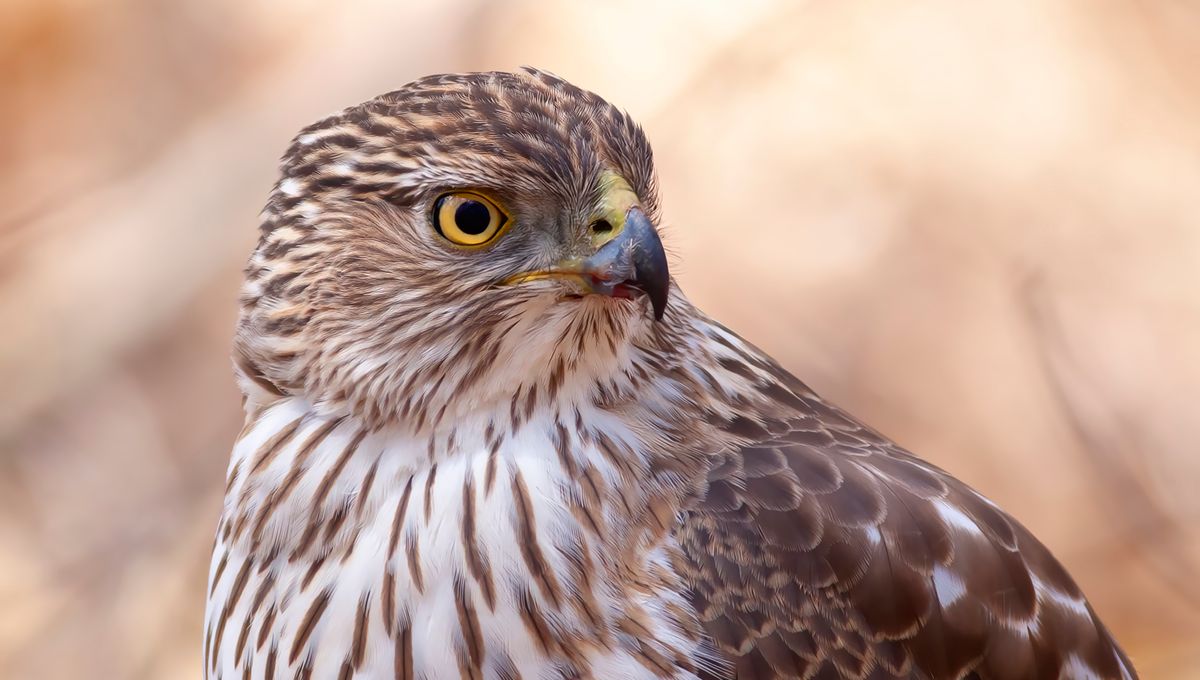
The human species was born with a single goal in our collective mind: to tame the natural world, and exploit it for our own purposes. As a recent account of a Cooper’s hawk in New Jersey has shown, however, sometimes, nature can flip that relationship right back on us.
“Many animals have learned to use cars for their own benefit, and birds seem to be particularly good at it,” wrote Vladimir Dinets, a zoologist within the University of Tennessee, Knoxville’s Psychology Department who studies animal behavior, ecology, and conservation, in an editorial accompanying his new research article.
For example, “crows drop walnuts, clams, even small vertebrates onto busy roads to have them killed and/or crushed by cars,” he pointed out. “Carrion-eating birds routinely monitor or patrol busy roads to immediately snatch roadkill [and] many American highways are partitioned by families of ravens who watch them from dawn till dusk, waiting for meals from under wheels.”
The Cooper’s hawk Dinets spotted on his commute was, in that sense at least, not unusual. But it was the particular technique that set this bird apart – not using the cars as simple and unpredictable moving abattoirs, but really taking things into its own hands. Uh, wings.
“I noticed something interesting going on at a street intersection near my home,” Dinets wrote. “The intersection wasn’t particularly busy […] but sometimes a pedestrian pressed a button, and that caused the red light to last a lot longer, so the car queue became longer, too, stretching all the way to a small streetside tree with a particularly dense crown. When that happened, the streetlight produced a sound signal, letting blind people know that it was safe to cross.”
At this signal, Dinets saw the hawk emerge from its perch at one end of the street, fly down the length of cars – low to the ground, so that its path would be obscured by the vehicles – until it reached its goal: one particular house, “inhabited by a nice big family that liked to eat dinner in the front yard,” Dinets explained. Those crumbs attracted smaller birds such as sparrows and starlings – a feast for the hawk, just so long as he could actually catch any of them.
And that’s where the ingenuity comes in. “The hawk always attacked when the car queue was long enough to provide cover all the way to the small tree, and that only happened after someone had pressed the pedestrian crossing button,” Dinets wrote. “As soon as the sound signal was activated, the raptor would fly from somewhere into the small tree, wait for the cars to line up, and then strike.”
It’s a startling sign of intelligence from the raptor: it shows not only an understanding of cause and effect – that hearing this particular sound would predict a longer queue of cars, meaning a better cover for hunting – but also just how accurate the hawk’s mental mapping ability was. After all, if you’re obscured from your prey by a line of cars, they’re also hidden from you – so once the conditions were right for hunting, the hawk only had a memory of the route to go off.
And the cherry on this brainbox cake? The bird was immature, and likely a very recent immigrant to the city. “And it had already figured out how to use traffic signals and patterns,” Dinets wrote. “To me it seemed very impressive.”
It’s certainly no secret that birds are more intelligent than we assume, but rarely do we see such a clear example of that outside of lab conditions. Like cockatoos, crows, and many other species, however, Cooper’s hawks are evidently a species who have figured out how to live their best life even in sprawling human cities.
And that’s more of a feat than it first sounds. “A city is a difficult and very dangerous habitat for any bird, but particularly for a large raptor specializing in live prey,” Dinets wrote. “You have to avoid windows, cars, utility wires, and countless other dangers while catching something to eat every day.”
Nevertheless, he wrote, “I think my observations show that Cooper’s hawks manage to survive and thrive there, at least in part, by being very smart.”
The study is published in the journal Frontiers in Ethology.
Source Link: Clever Hawk Spotted Using Pedestrian Crossing To Catch Prey In New Jersey